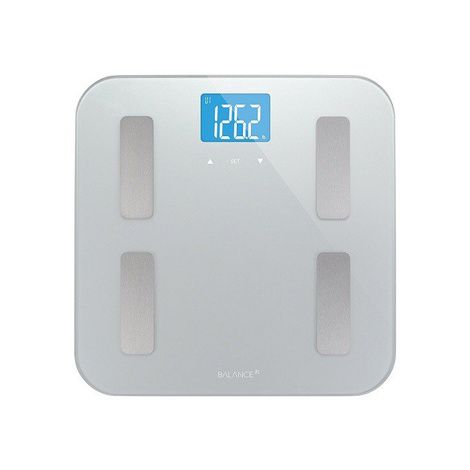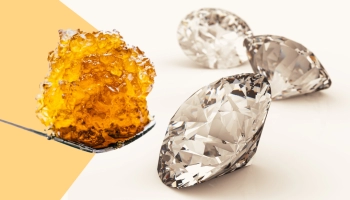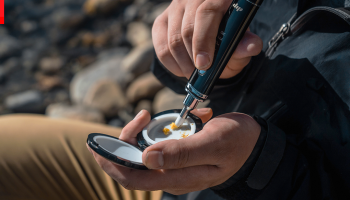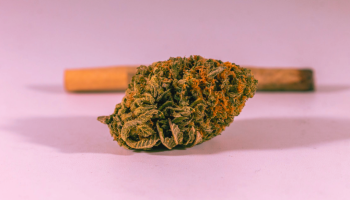Have you ever compared two strains from different dispensaries and found out one is a lot more expensive than the other? Or if you’ve been around the hemp space for a while, you’ll notice the difference between some flowers, depending on the place you are buying.
Some nugs can even differ from one state to another. For example, California is more expensive than other states to find quality buds. Medicinal marijuana can also be somewhat pricier than hemp products or other types of buds. But if you want to know how much is an ounce of weed and what are some factors that change this, you’ve come to the right place.
In this article, we’ll show you how much is an ounce of weed in general, how hemp and medicinal marijuana differ in price, and factors that can affect the price spike. We also gathered information on some key things to look at when looking at dispensaries and buds. We’ve got a lot to unpack, so let’s start.
Key Takeaways
- An ounce of hemp can cost anywhere from $100 up to $400, depending on the origin, strain, potency, taxes, and much more.
- Some factors that determine how much an ounce of weed costs include production and branding, taxes, the rarity of the strain, cannabinoid level, and accessibility in your state.
- Weed can be measured in grams and ounces. Grams are generally used to measure smaller amounts and amounts in joints, while ounces are better for larger measurements.
- Generally speaking, an ounce of weed can last at least a month if you smoke joints with a gram each.
How Much Does an Ounce of Weed Cost?
So, the cost of 1 oz of weed can vary depending on lots of factors, but in general, you can find an ounce of legal hemp anywhere between the mid-hundreds and up to $400 USD. Medicinal marijuana can be even more expensive than hemp due to the licensing and the states where it is legal, with some spiking up the price by a few hundred.
This also depends on which state you are in, as some have different regulations that can change how easy it is for dispensaries to grow, cure, and generally sell weed. States like Oregon have laxer laws than Washington State, which makes hemp more accessible in the first state.
back to menu ↑What Factors Determine How Much an Ounce of Weed Costs?
Now, there are several reasons why an ounce might cost more, even if they are the same strain. We’ll explore some of them, including the growing technique, the general production costs, the rarity of the strain, and how available hemp is in that city or state. Let’s take a look.
Production Costs and Branding
Some brands might have finer processes when harvesting and curing hemp, including equipment, labs, seeds, or even packaging.
Others, as part of their branding, might have packaging like child-safe lids for gummies and tinctures, reusable doobie tubes, or even glass jars for your recently bought nugs. All of these affect the price of weed in general.
Strain Rarity
Some seeds are more difficult to grow than others, requiring special needs, light, water, or even soil nutrients. Other strains might be difficult to get or crossbreed, which makes them even more unique whenever you buy a nug. Because of this, you might find some strains are more expensive than others.
Weed or Hemp Accessibility
As we explored before, legislation on hemp and cannabis can tighten prices a lot. Since not all states have access to medicinal marijuana, hemp tends to be pricier as there are no alternatives to hemp-derived products.
Medicinal marijuana can also be pricier in general due to the licensing required by the state, the lab requirements, and even taxes or fees given by the local authorities to limit consumption.
Now, there’s another key factor in understanding how much is an ounce of weed: where it’s grown. Since the medium affects the yield and quality of the product, these can spike the price pretty easily. Let’s take a look at the difference between indoor, outdoor, and hydroponic growing.
Indoor vs. Outdoor vs. Hydroponic: Which Is More Expensive?
Choosing indoor, outdoor, or hydroponic-grown strains adds another complexity level on why a nug might be more expensive than another. As a general rule, plants grown on soil are less expensive than hydroponic ones as they generally use fewer resources and yield less.
Now let’s start from the bottom. Outdoor-grown strains are usually the cheapest from the list, as they usually are grown massively on fields. These are then harvested and cured mechanically, which saves up time and allows dispensaries to have more weed at the ready.
Next comes indoor or greenhouse growing. This method nurtures plants on the inside with artificial lights, which makes these types of weeds develop better quality flowers and even more trichome crystals. It also uses controlled temperature and specialized lights, and some users even have different types of soil, like coconut rinds.
Lastly, and at the top of this list, you’ll find hydroponic weed. These use water and air instead of soil as a medium to grow the plant in a specialized system. These nugs develop even more trichome crystals and aromatics, making the crème de la crème of nugs, at least quality-wise. This, of course, inflates the price but gives an incredible taste and aromatics, which some people mention as theirs.
back to menu ↑Does an Ounce of Sativa or Indica Cost More?
In general, there is no clear difference in price if a strain is a sativa, indica, or hybrid. Other factors like the actual rarity of the strain, the resources used to grow it, and even the medium might make the bud cost more.
For example, common strains like Gorilla Glue #4 can have multiple prices, depending if it’s organic, hand or machine cured, or if it’s grown indoors or outdoors. That said, this hybrid strain will probably have a similar price range to other popular hybrids or sativas, like Silver Haze or even the decadent indica OG Kush.
This is because popular or known strains usually have similar prices and compete on other factors like organic certifications, soil, hand-picking, and curing, even if they have strong potency or not. Some of the most expensive strains around actually have really high cannabinoid levels.
Now, indica or sativa is not that relevant in price when compared with cannabinoid levels. Strains with a stronger Delta-9 THC or CBD level will definitely cost more, as they tend to have more potency and are rarer to find.
back to menu ↑How Much Does an Ounce of Medical Marijuana Cost?
Medicinal marijuana is a little different from hemp. To sum it up, certain states have specific legislation that allows products with THC (Delta-9 THC), specifically flowers, to be produced and bought in small quantities.
There is a catch, though, as dispensaries and growers require special licensing by the state with several requirements. The buyer also requires a special permit to buy these nugs, which is issued by a medical practitioner that shows the users require cannabis as a supplement to their treatment.
Because of all of these requirements, medicinal cannabis can be more expensive than hemp. An ounce usually goes from $200-$500 USD, depending on the quality, strain, and even dispensary. Pre-rolls can go from $10 up to $25 USD as well.
back to menu ↑How Many Grams Is in an Ounce of Weed?
Getting to know how weed is measured can make you understand better the cost of 1 oz of weed. The first thing is that the industry uses two types of measurements, ounces for larger quantities and grams for smaller ones.
Now, if we round up the full ounce, it should have around 28 grams. This looks roughly like a handful of nugs using two hands, considering you have medium hands. While it might seem like a small amount on paper, an ounce can last for a while if you are a casual user.
Because of this, you might want to buy smaller amounts like ½ ounce, ¼ ounce, and up to ⅛ ounce of weed. If you buy prerolls, you’ll often recognize that a joint might have anywhere between half a gram and up to seven.
The biggest joints are called “king-sized,” while the half-gram ones are known as “halfsies.” Standard pre rolls will have around a gram of weed, which will last for a good session and to pass around. Cigarette-sized joints have around 0.3g of weed each.
back to menu ↑How Many Joints Are in an Ounce of Weed?
This is relatively easy to calculate. If you are rolling the 1-gram joint standard, you’ll have around 28 joints. Now, users generally don’t smoke a one-gram joint every single time, so about a third of that is closer to a quick sesh.
If that’s the case, you’ll have around 84 cigarette-sized joints if you use 0.33g of weed. If you want to go partying and buy king-sized joints, you can generally get about four party joints of 7 grams each (or ¼ of an ounce, if gram lingo is complicated).
Here is also a small reference on how many joints you can approximately only in ounce measures.
- ½ of an ounce will provide you with material for about 14 standard joints or 42 cigarette-sized jays.
- ¼ of an ounce can give you about 7 jays or 21 smaller-sized cones.
- ⅛ of an ounce will give you the raw material for 3 joints or 8-9 small cones.
Now depending on how much an ounce of weed costs, it might be better to buy smaller quantities or pre rolls at first to see if you’d like that specific strain. This way, you don’t have to compromise on bulk buying and try several buds at first.
back to menu ↑How Long Does an Ounce of Weed Last?
To answer this, you really have to take into account how much you actually smoke. To put this in perspective, you are smoking 28 1-gram joints in an ounce, which is roughly a joint per day if you were to distribute them throughout a month.
So, generally speaking, an ounce could last for a month if you are a daily smoker. Casual smokers that indulge up to three times a week could easily make their ounce last up to 3 months, which is a lot. Just make sure to keep your weed in an airtight jar, away from light, heat, and humidity.
Newcomers might be better off buying ¼ or ⅛ of an ounce at first, as a single ounce for a very casual smoker can be too much. And since cannabinoids tend to break down with time, light, and temperature changes, by the fourth month, your weed might taste stale or lose its potency. Or, in humid areas, you could even get mold pretty easily.
Take this into consideration when shopping for weed, as buying a full ounce might not be the best option for all types of users. That said, if you find yourself buying half ounces over and over or splurging on many prerolls during the month, you might want to invest in an ounce of weed instead.
back to menu ↑Final Thoughts
As we’ve seen, many factors influence how much an ounce of weed costs. The production costs and branding, the rarity of the strain, the accessibility of hemp or weed in the area, and the method used to grow the weed are all factors to consider. Don’t be surprised if prices vary dramatically from one place to another or even from one strain to another within the same dispensary. Remember that pricier options might deliver higher quality, unique flavors, or rare effects, but this might not always align with your personal preferences or needs.
When choosing your weed, it’s also important to know how much you’re actually getting. Weed is often measured in grams or ounces, with an ounce equating to about 28 grams. If you’re new to buying weed, start with smaller amounts to understand how much you personally consume and how long it will last. You don’t want to overspend on something you might not fully use and might get stale or grow moldy with time.










